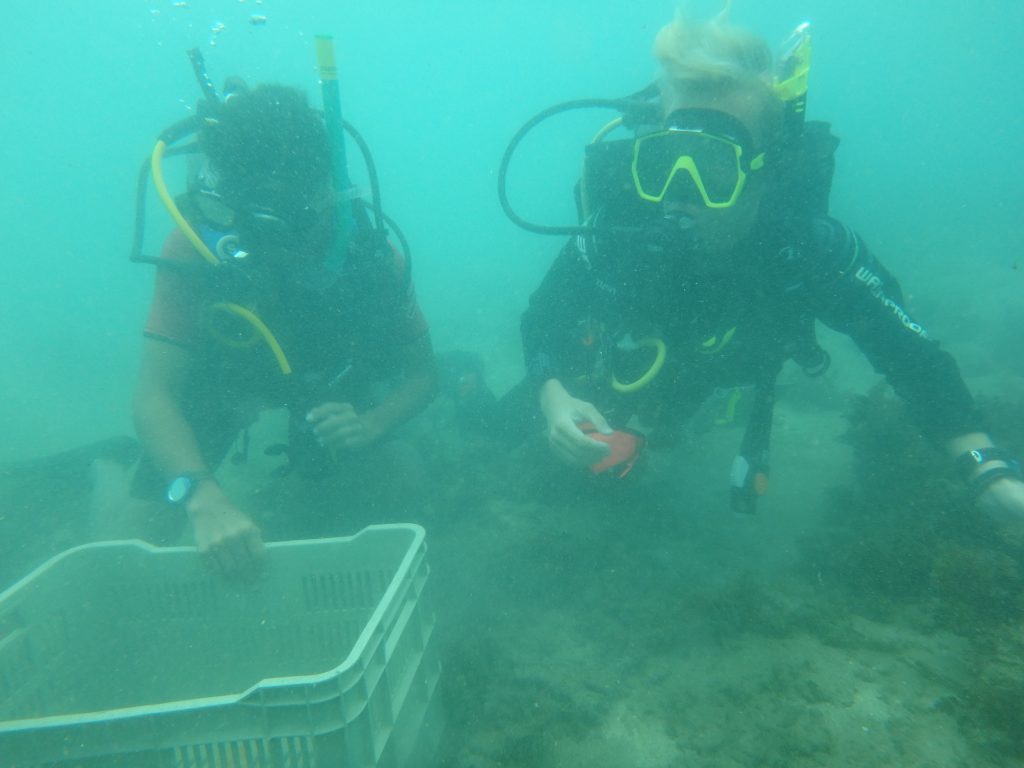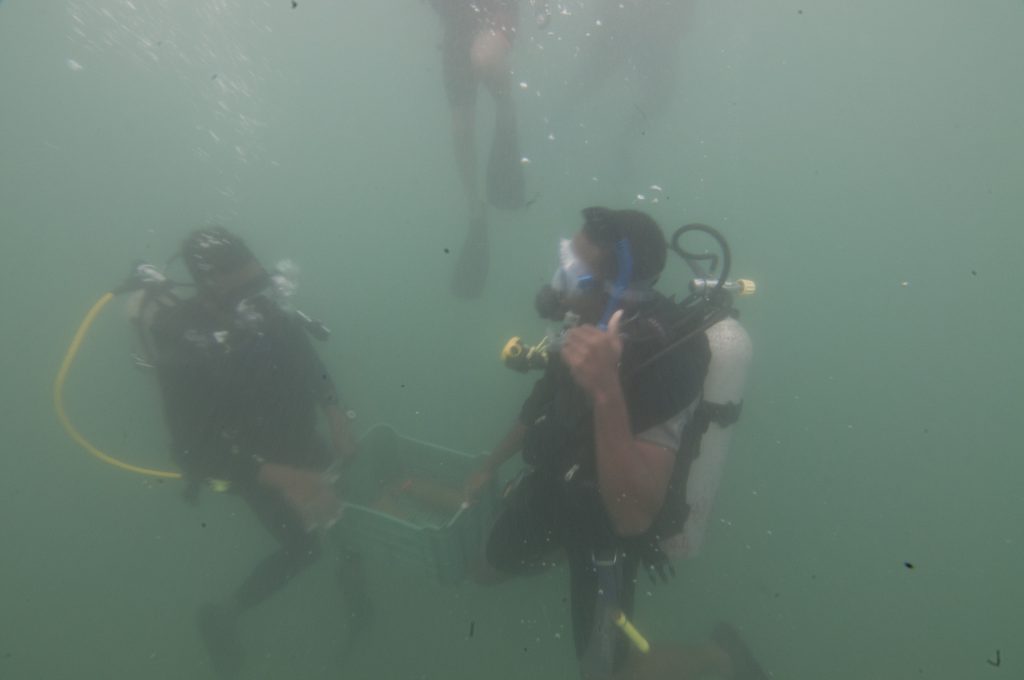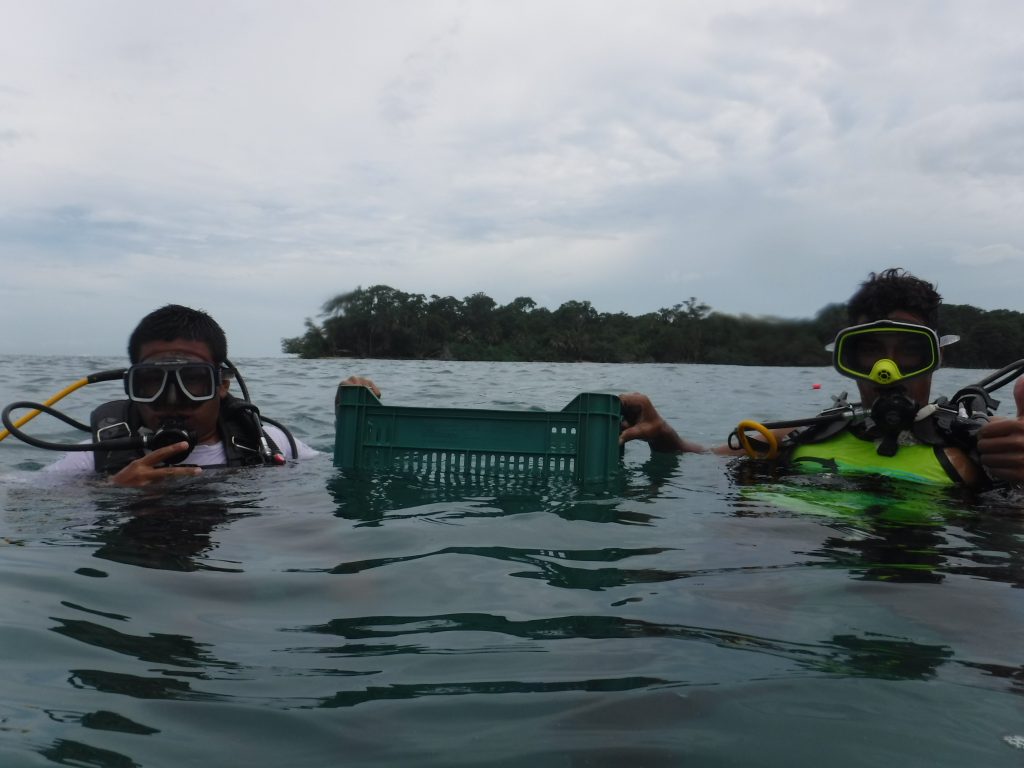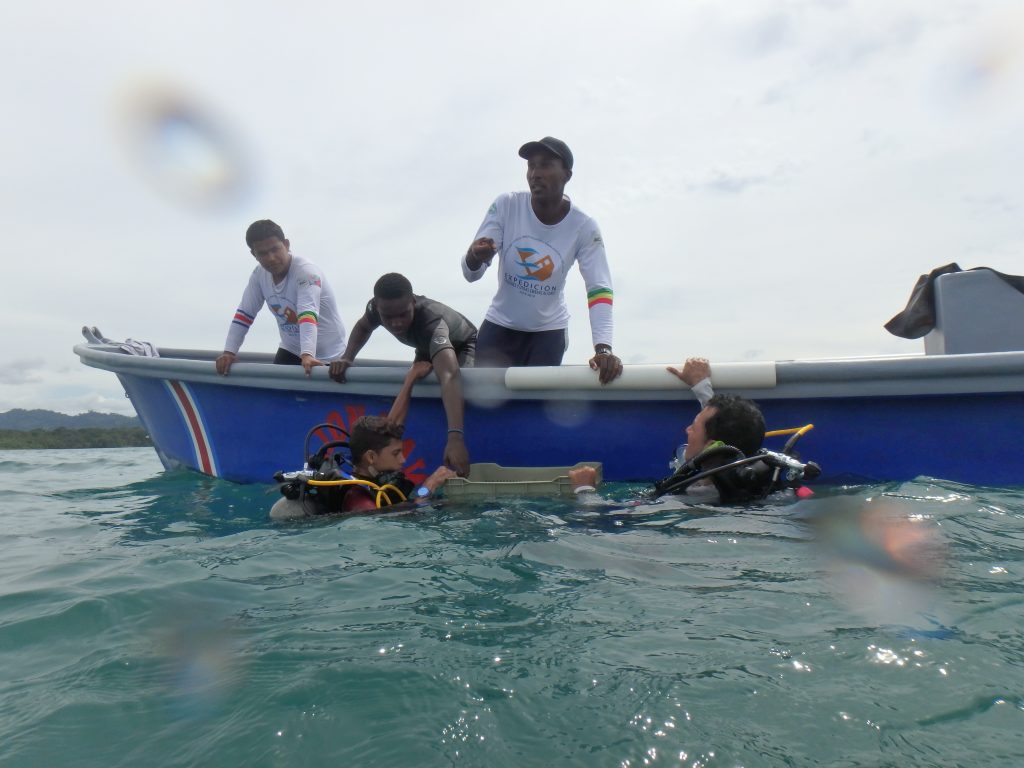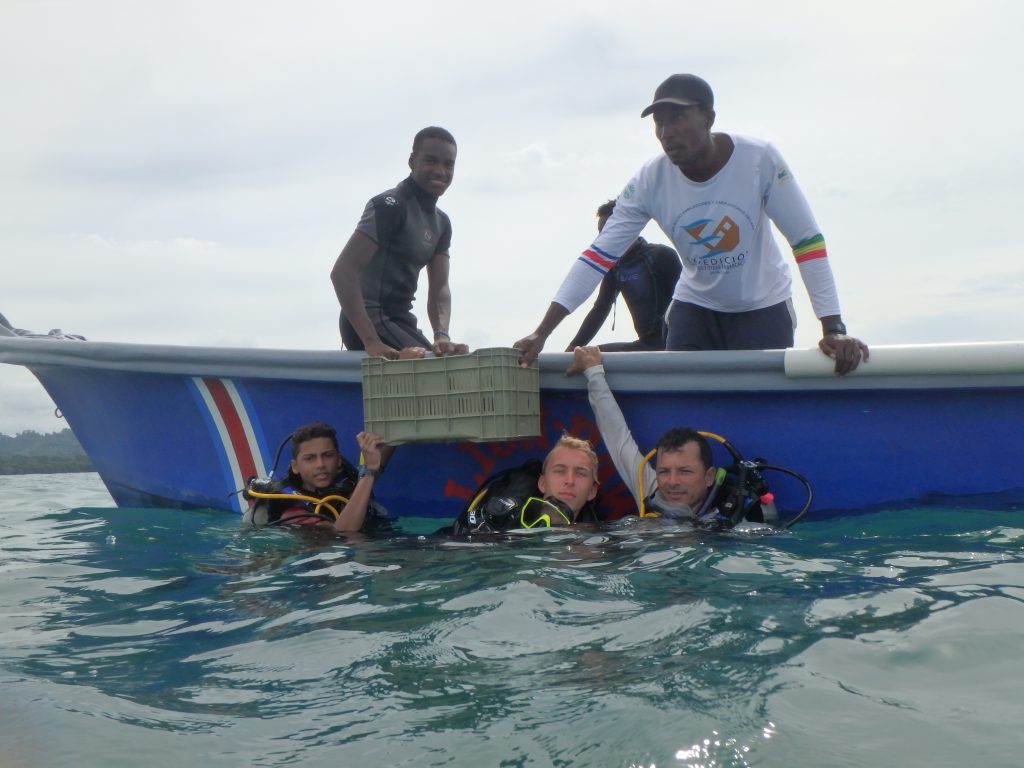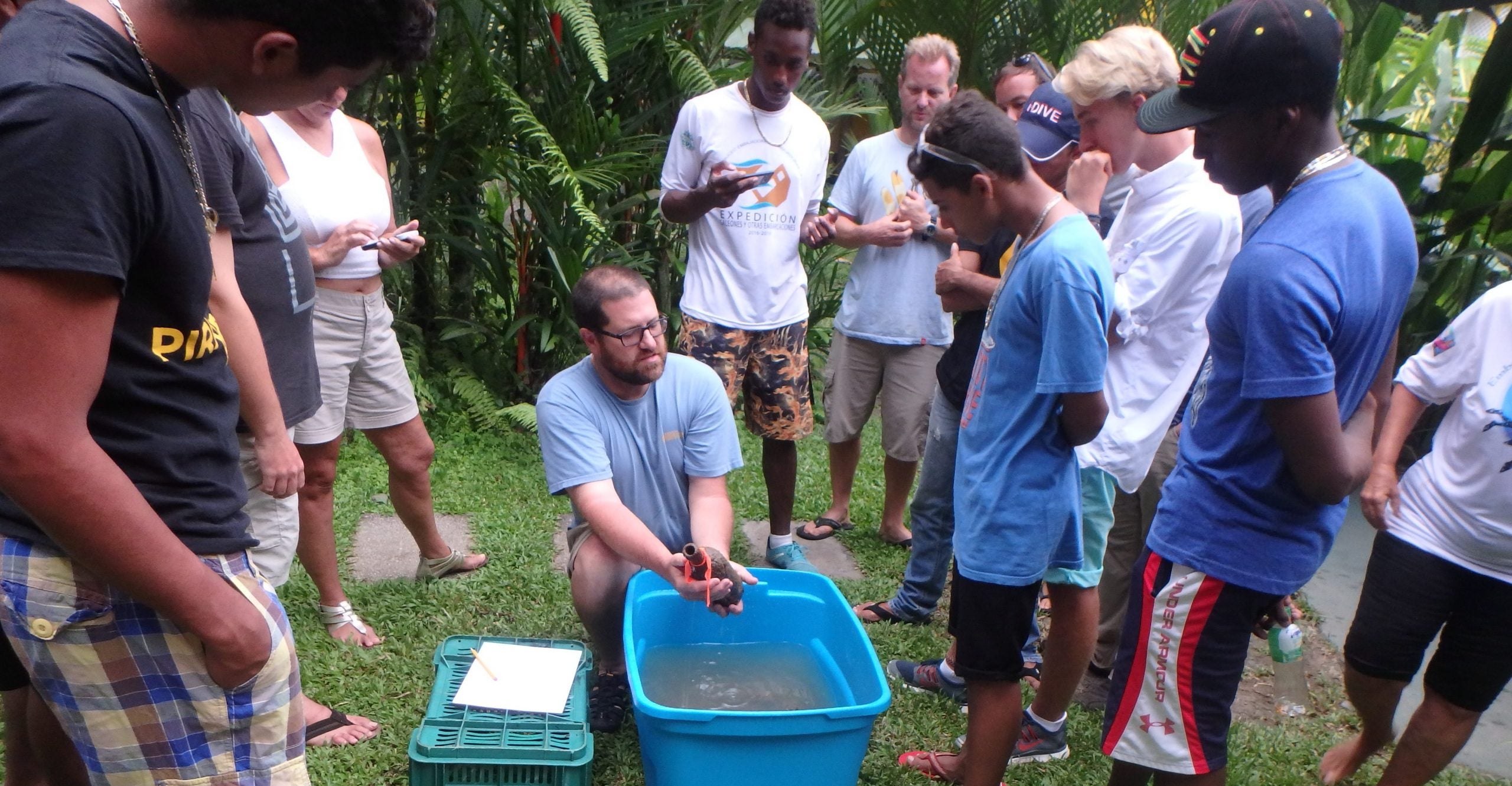Buddy pairs were assigned a section of the baseline to search for unnatural looking concretions and artifacts and to assign a vinyl number tag and orange flagging tape. Once an artifact had been identified for recovery the object was stabilized by carefully sliding a slate underneath it to support it as it was gently lifted off the ocean floor. The artifact was immediately transferred to a milk crate which was brought to the surface by Costa Rican students and subsequently handed to a surface support team on the boats. The artifact, once on the boat, was transferred to a water-filled tank where it was covered and thus protected from sunlight. At the end of the day, the tanks containing the archaeological finds were carefully removed from the boats and transported back to the research base.
During artifact search and tagging operations, a kettle was located and identified on the site of the brick wreck. There are several possibilities as to the kettle’s placement on the site. Many of these are dependent upon an identification of the metal alloy that the kettle is made from, determined from XRF analysis.
During the 2016 field season, the team recovered three bricks. One from the brick site, another from the cannon site, one at the anchor and one from the near shore area of the cannon site. The Brick Shore Site is a compilation of scattered brick assemblages found in the shallowest reef areas of Punta Cahuita. Located adjacent to the National Park Rainforest Path, this second brick site is located 5 meters from the beach. In depths measuring less than a meter, the team found a scattering of bricks leading to the shore that initially showed no distinctive pattern. The bricks found in this area vary in both size and color. Some bricks resemble the yellow tint of those from the Brick Site, while others boast a rose pink coloration. Both complete and broken bricks were found throughout the area. The objective of the brick recovery operations was to compare the three bricks in appearance, size and composition using XRFT technology. The results would be indicative of a relationship between the sites and peripheral areas if the three bricks were similar
